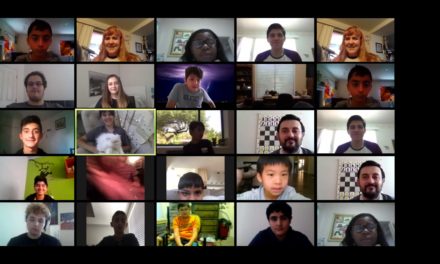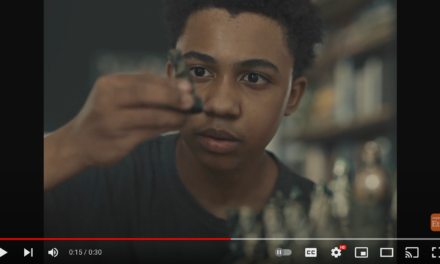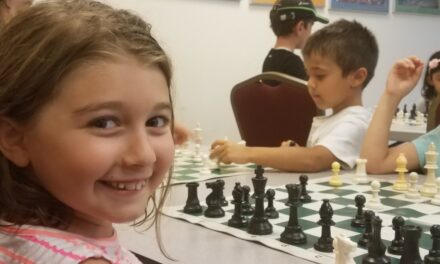Well, my mood is not where it was writing about the match 1. We did OK and mainly it was “thanks” to me not winning a 95% winning position. Before the match most were predicting a win for our team and we did come indeed very close. From the more positive point- we have more points now than we had last year after Match 2, so we are still in a good shape. Once again, I want to thank all the players, organizers, helpers and volunteers for making this yet another perfect match.
My predictions about the match openings were approximately this way:
Board 1. I expected some English pawn structure or a Slav type.
Board 2. I knew I was going to play 1 e4, which should be a slight surprise for my opponent. I expected a Modern, Pirc, Sicilian, Caro or even Alekhine. I looked at all… except Sicilian, which was played! Had indeed read GM Hess’s comments about my style and opening choice and wanted the extra pleasure of proving I am not always a “Nf3 Fiancetto Lev”. Who knows.. maybe he was right.
Board 3. I very quickly looked up at Robby’s opponent’s games and was not sure what even the 1st move will be. It could be 1 e4 (going for blood, since last year Robby beat the same guy in the Slav/Stonewall ) or could be 1 d4, since amazingly both players had similar opening repertoires as Black ( Sicilians, French, Benko, you name it )
Board 4. Considering David likes fianchettoed Bishop on most Gruenfeld/Benoni/Kings Indians, I saw likelyhood of one of it happening or thought maybe some slav might be happening.
Board 1: GM Ehlvest- GM Ramirez
General Styles: Ehlvest – More into structural/special advantage openings. Ramirez- more active and creative openings.
Theoretical Importance: 7
Novelty: 5
Precision: 8
Opening: English/Maroczi Bind
Ehlvest is very strong in pawn structures ( Alejandro called him a “legend” ) that are mainly fixed yet have lot of wiggling room. I lost to him few years ago in that exact manner. However, he barely drew at the last season again a Dallas IM as white in one of those structures so even though I didn’t like what Alejandro got, I thought the story can repeat. Ehlvest interpreted the structure this time with 8.f3 (instead of Be2 normal set-ups) and quickly got a small edge I thought. Despite Alejandro’s usual creativeness (moves such as 16…Bb2, 37…Q:c2), it didn’t have the desired result against the ironed logic of Ian, where his 2 Bishop’s advantage slowly led to a direct King side attack. The game also proved one more time why 2 Bishops is an advantage. As Tartakower put it in 1920’s half seriously, half jokingly- the advantage of 2 bishops is.. you can always trade one.
Board 2: IM Altounian- IM Burnett.
General Styles: Me- more structural as White. Burnett- less theory, more creativity.
Theoretical Importance: 6
Novelty: 9
Precision: 9
Opening: Sicilian Alapin
A very sad game for me, especially since last year ( 2008 ) the 2nd game for the Scorpions I had amazingly similar story: Winning position into the middlegame, and then sac of an exchange for an attack and 3 pawns and missed a checkmate in 1! This time I didn’t miss a checkmate, but after being up 2 pawns, missed a tactic and ended up down an exchange for again 3 pawns! Few more small but important mistakes in the time pressure and I had to agree for yet another draw. As I mentioned above, I looked up every opening… except what was played. So after playing my main line against the Sicilian- the Alapin, I was feeling uncomfortable about his 1st move choice. Fortunately Ron chose a line I know well (GM Khachian frequently played it against me when I was residing in California) and he immediately made an inaccuracy that many people apparently also made in the database ( 4…Nd7 does not look good in conjunction with 5…Qc7 ). I found the most precise way to prove it wrong and get a winning position (starting with 6 Qb3 and up to 18 Rb1- according to Rybka I played best moves) but then completely missed my opponent’s amazing resource ( 21…Rb6!!). Had I seen it, instead of the rush 19 R:b7, 19 f:e5 would effectively finish the game. After being forced to sac an exchange, few mistakes later (most notably missing 27 Qc5! which still wins very nicely) the game ended up in a draw, much to my and teammates disappointment. I’ll just live by Robby’s words after the game “You are not going to be the last one to screw up at this tournament”. Lets see- hopefully not me and not our team! Last thought and Greg Shahade can decide if it is legal- can I play first 25 moves, get positions I get and pass it to let’s say Alejandro to finish it?
Board 3: FM Andrews- FM Adamson.
General Styles: Andrews- active chess, less openings as 1 d4. Adamson- active yet more structured openings as Black.
Theoretical Importance: 8
Novelty: 7
Precision: 5
Opening: Bogo-Indian/2 Knights Tango
I think Robby was a bit surprised by the 1d4 choice and chose his 2 Knights Tango that frequently leads to closed up structures of Bogo-Indians. At some point I think both me and Robby had the feeling that 11 Ne1 was an inaccuracy (normally White waits for Black to castle then goes Ne1). However, I personally didn’t like how the game went between moves 12-15 for Black (such as 13…d:c5) where it looks like Black regrets his choice for King side attack. However, I just think Robby is stronger than similarly rated other players ( I don’t even want to count how many points I lost in my rating from drawing Robby countless times) and quickly fixes the problems (or his opponent was not strong enough to prove him wrong) he is facing while retaining the extra pawn. The rest was very nicely done.Once again, very well done! Perfect 3rd board.
Board 4: Adelberg-Justice
General Styles: Adelberg- active but set opening repertoire. Justice- more active openings.
Theoretical Importance: 8
Novelty: 7
Precision: 8
Opening: Gruenfeld, Fianchetto line.
I was recently reviewing the game Bacrot-Maze (Montreal 2009) where black successfully solved opening problems (draw in 22 moves) when I saw our 4th board got the exact same position. I am not an expert on this line but it looked like this game also ended up relatively even up to the end. Justice did not trade Queens like GM Maze did but got a normal game nevertheless. After some more trades Black got a passed pawn where it looked like he has chances to win. It is not easy playing equalish middlegames against Queen side majorities. Precise defense by David up to the point when they went from 1 minute to 6 minutes left, thanks to the 30 second increment rule.Yet continued blitzing out and making many small inaccuracies made it hard to judge for observers. At the end all ended peacefully and the overall match was tied.
Please visit the Scorpions website for more commentary and game news




